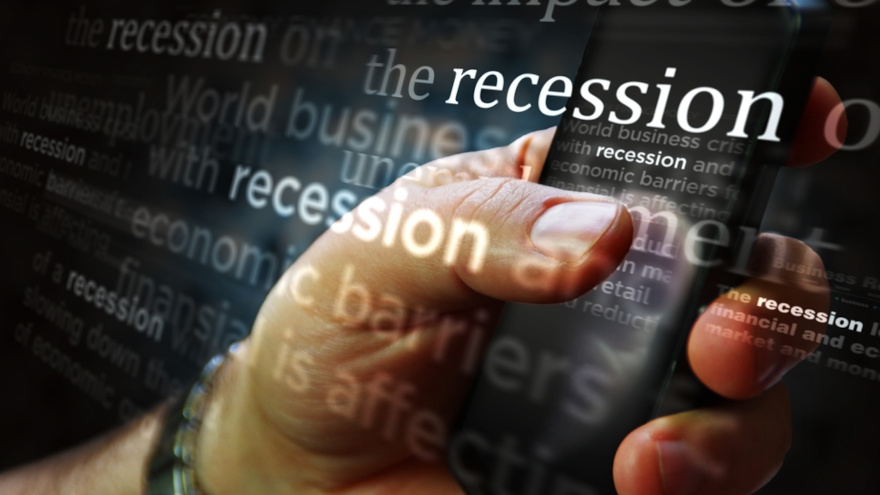What’s the Sahm Rule? Are we already in a recession? 3 economists respond

Image by Skorzewiak / Shutterstock.com.
By subscribing, you agree to receive communications from Auto Remarketing and our partners in accordance with our Privacy Policy. We may share your information with select partners and sponsors who may contact you about their products and services. You may unsubscribe at any time.
Last week, ADP Research Institute chief economist Nela Richardson said, “If inflation goes back up, it won’t be because of labor.”
But the ongoing labor situation might be giving a clear indication the economy already is in a recession, potentially snarling underwriting and collections at your auto finance company.
Cox Automotive chief economist Jonathan Smoke explained what’s going on in the job market through his weekly look at the economy.
“The job market in July saw a significant slowdown in growth,” Smoke posted in his blog on Monday. “There were 114,000 new jobs created, far short of the anticipated 175,000. This resulted in an increase in the underemployment rate, the broadest measure of unemployment, which rose to 7.8%. This is 0.8 percentage points higher than the rate in February 2020.
“The headline unemployment rate increased to 4.3% from 4.1%, also a 0.8 percentage point increase. The July increase triggered the Sahm Rule, which suggests a recession could already be underway due to the deterioration in the labor market.”
What’s the Sahm Rule? According to the Federal Reserve Bank of St. Louis, the rule is named for economist Claudia Sham, who previously was a part of the Federal Reserve and the Council of Economic Advisers. The rule signals the start of a recession when the three-month moving average of the national unemployment rate rises by 0.50 percentage points or more relative to the minimum of the three-month averages from the previous 12 months.
Subscribe to Auto Remarketing to stay informed and stay ahead.
By subscribing, you agree to receive communications from Auto Remarketing and our partners in accordance with our Privacy Policy. We may share your information with select partners and sponsors who may contact you about their products and services. You may unsubscribe at any time.
“This indicator is based on ‘real-time’ data, that is, the unemployment rate (and the recent history of unemployment rates) that were available in a given month,” the St. Louis Fed said. “The (Bureau of Labor Statistics) revises the unemployment rate each year at the beginning of January, when the December unemployment rate for the prior year is published. Revisions to the seasonal factors can affect estimates in recent years. Otherwise, the unemployment rate does not revise.”
Before your finance company starts to make significant changes to underwriting or collections, Comerica Bank chief economist Bill Adams and senior economist Waran Bhahirethan offered this context on Monday.
“There are several reasons why the Sahm Rule recession indicator could be a false positive this time,” Adams and Bhahirethan said. “Hurricane Beryl shut down large swathes of the Houston economy in July, affecting more than 2% of Americans — a headwind that is quickly fading. The auto industry retools in the summer months, which may be behind some of July’s weak manufacturing sentiment and hiring. And many members of the recent wave of new immigrants arrived in the United States without jobs and looking for work, adding to unemployment.
“These collective factors could have raised the unemployment rate in July even as the economy continued to grow. In addition, the most widely followed survey of the service-sector showed it expanded moderately in July, and industries covered in that survey account for a large majority of U.S. GDP and employment,” they continued.
No matter, Adams and Bhahirethan emphasized that pressure is likely mounting on the Fed to cut interest rates when policymakers’ next opportunity comes in September.
“With the economy potentially at a pivot point, the Fed’s policymakers will want to make clear that they are ready to respond flexibly and nimbly if the economy weakens more than expected, as well as being prepared if inflation resurges,” the Comerica Bank economists said. “The Fed’s July monetary policy statement largely articulated this stance. But the Fed didn’t explain their plans to respond to a serious, self-reinforcing downturn—which absent some new inflationary shock could easily push inflation below their target — and markets are worried that the Fed could get blindsided.
“Over the next few weeks, Fed policymakers will likely reassure markets that they are prepared for a broad range of outlooks, including downside risks. By emphasizing they are alert to the possibility of a regime change, the Fed can lower the risk of markets and the public overreacting and fueling a self-reinforcing loss of confidence,” Adams and Bhahirethan went on to say.


